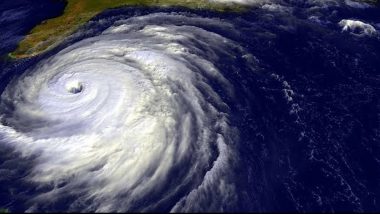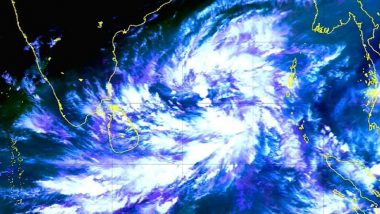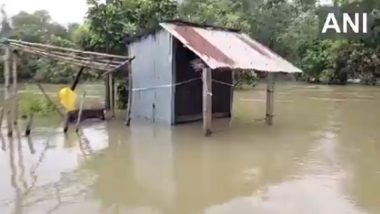New Delhi, November 24: Cyclone Nivar is likely to make landfall in the costal areas Tamil Nadu and Puducherry between Karaikal and Mamallapuram on November 25 evening. It is expected to have a wind speed of 100-110 kmph gusting to 120 kmph and bring along heavy rainfalls in the southern states. It originates from the Bay of Bengal and it is the second severe cyclone of the year after Amphan that made landfall in May.
The name 'Nivar' is selected as per the suggestions from Iran. This is the third name to be used from the list of names for North Indian Ocean Cycle, released in 2020. The word 'Nivar' means prevention. Recently, on November 22 cyclone Gati made landfall in Somalia. Its's name Gati - meaning speed or velocity- was suggested by India. Cyclone Nivar Live Tracker Map on Windy: Severe Cyclonic Storm Likely to Cross Tamil Nadu & Puducherry Coasts on November 25, Check Realtime Status Here.
Who Assigns Names to Tropical Cyclones?
The United Nations Economic and Social Commission for Asia and the Pacific and the World Meteorological Organisation in 2000, decided on a method to give names to tropical cyclones in the Bay of Bengal and the Arabian Sea. Under this, a group of countries including Bangladesh, India, Maldives, Myanmar, Oman, Pakistan, Sri Lanka and Thailand, provided a list of 13 names each for tropical cyclones over the Bay of Bengal and the Arabian Sea. In 2018, Iran, Qatar, Saudi Arabia, the UAE and Yemen were also added to the panel. The panel is tasked to assign names to the cyclones.
The names suggested by the panelists are listed alphabetically country-wise, starting with Bangladesh followed by India, Iran, Maldives, Oman, Pakistan and so on. Accordingly, name is assigned to the cyclone taking place subsequently in the Bay of Bengal and Arabian Sea. Following Nivar, the next few cyclones will be named Burevi (Maldives), Tauktae (Myanmar), Yaas (Oman), and Gulab (Pakistan) as per the new list of tropical cyclone names adopted by member countries in April 2020. Cyclone Nivar: Tamil Nadu Braces For Another Storm, Heavy Rain Alert Issued By IMD, NDRF Deputes 30 Teams For Rescue Operations As State Under ‘Red Alert.’
The member counties are advised to follow certain rules and guidelines while naming the cyclones. Here is the list of the rules:
- The proposed name should be neutral to (a) politics and political figures (b) religious beliefs, (c) cultures and (d) gender
- Name should be chosen in such a way that it does not hurt the sentiments of any group of the population over the globe
- It should not be very rude and cruel in nature
- It should be short, easy to pronounce and should not be offensive to any member.
- The maximum length of the name will be eight letters.
- The proposed name should be provided along with its pronunciation and voice over.
- The Panel reserves the right to reject any name if any of the criteria above is not satisfied.
- The finalised names may also be reviewed during the course of time of implementation with the approval of PTC in its annual session, in case any reasonable objection is raised by any member.
- The names of tropical cyclones over the north Indian Ocean will not be repeated. Once used, it will cease to be used again.
It is important to name the cyclone to identify it among different countries. Also it is easier to retain and use these names as compared to the technical and scientific names.
(The above story first appeared on LatestLY on Nov 24, 2020 12:21 PM IST. For more news and updates on politics, world, sports, entertainment and lifestyle, log on to our website latestly.com).













 Quickly
Quickly




















